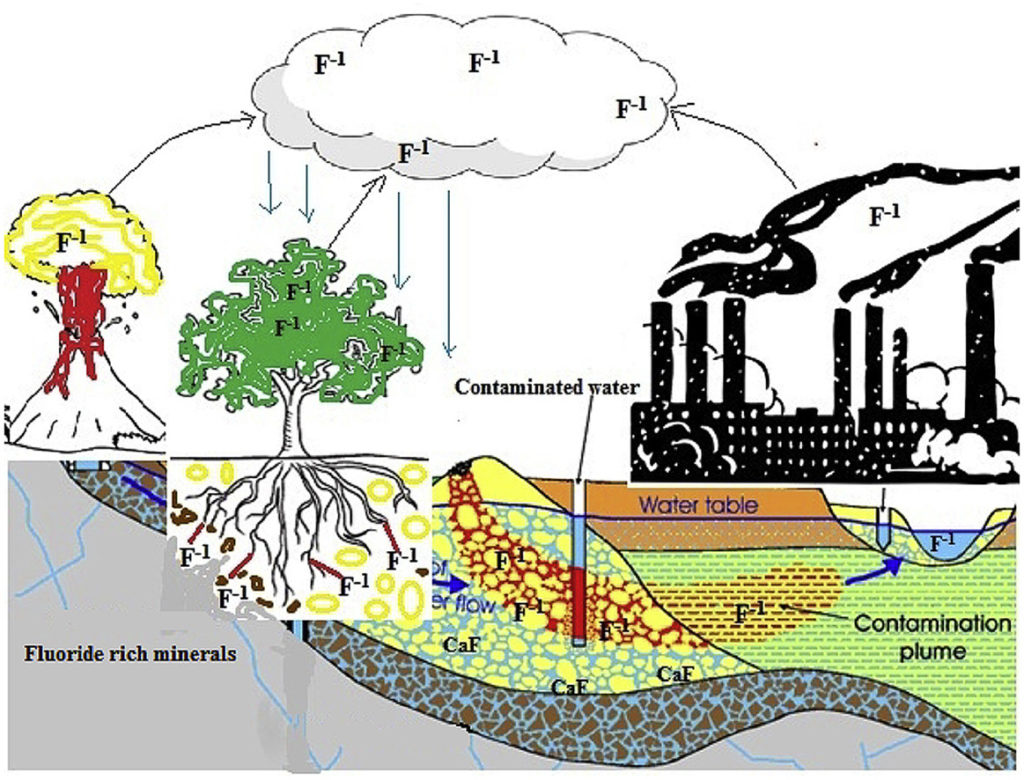Highlights
- • Quantification of F– in anthroponogenic and natural sources.
- • State wise fluoride contaminated areas in India.
- • Level of F– uptake and toxicity mechanism in plants.
- • Low-cost F– mitigation techniques available in the literature.
Abstract
Fluorine is an essential element required in trace amounts but gets toxic for human beings at levels more than 1.5 mg F– L-1 primarily through drinking contaminated water. It is the 13th most abundant element and constitutes about 0.06–0.09% in the earth crust. It is electronegative in aqueous medium forming fluoride ion (F–). Fluoride contamination in the environment occurs mostly due to anthropogenic and geogenic sources. Fluoride is widely distributed in all components of environment, air (0.1–0.6 ugL-1) soils (150–400 mgKg-1) rocks (100–2000 mg Kg-1), plant (0.01–42 mgKg-1) and water (1.0–38.5 mg L-1). Human beings and animals are being exposed to F– primarily from water (0.2–42.0 mg L-1) and plants (0.77–29.5 ugg-1). Fluorosis, a health hazard due to F– is a major problem in many countries across the world affecting about 200 million people globally. In India, > 62 million people in twenty states are facing problem due to F–. The most affected states are Rajasthan (7670 habitations), Telangana (1,174 habitations) and Karnataka (1122 habitations). To mitigate this problem, there is an urgent need to understand the current status and brief knowledge of F– geochemistry. The objective of this review is to highlight different sources of F– that contaminate different environmental matrices including plants, the extent of contamination level in India, uptake, translocation and toxicity mechanism in plants. The review also highlights currently available mitigation methods or technologies through physio-chemical and biological means.
Graphical abstract

*Abstract online at https://www.sciencedirect.com/science/article/pii/S0269749117345657
